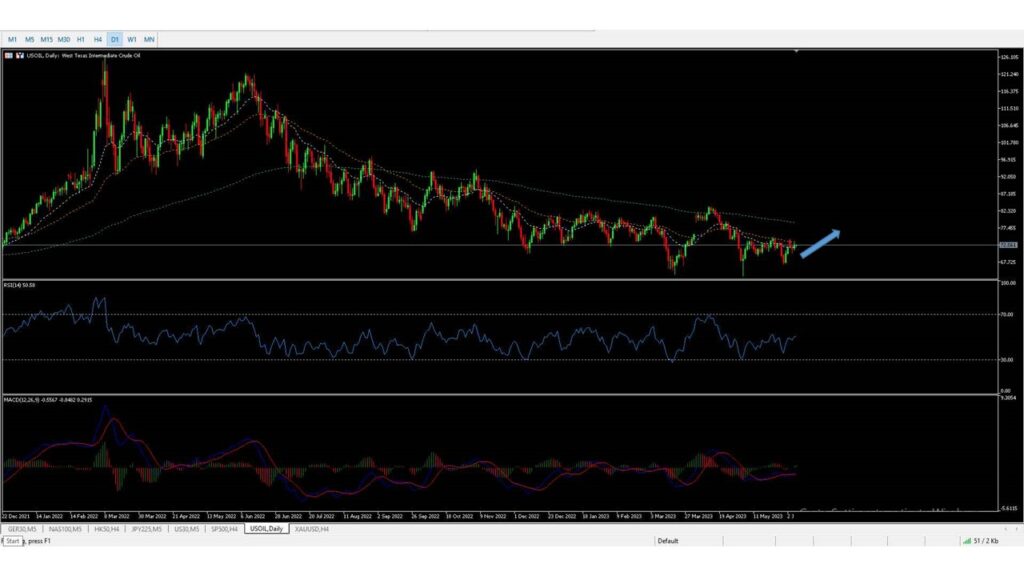Major Support at 64.835:
The market for OIL has found significant support at the level of 64.835. This support level indicates an area where buying interest outweighs selling pressure, leading to a potential reversal or a pause in the downtrend. It suggests that there is a strong demand for crude oil around this price level, as buyers are stepping in to support the market.
Traders should closely monitor the price action around this major support level. Any signs of buying pressure, such as bullish candlestick patterns (e.g., hammer, bullish engulfing), increased buying volume, or positive divergence in technical indicators (e.g., bullish divergence in RSI), could indicate a favorable buying opportunity. These signals suggest that the market has found solid support, increasing the likelihood of a potential upward move.

Upward Target Price of 82.193:
After finding major support, the OIL market is anticipated to push up towards a target price of 82.193. This target represents a potential resistance level where sellers may become more active and exert selling pressure, potentially leading to a pullback or a pause in the upward trend.
Resistance levels act as barriers to price movements, indicating areas where selling interest typically outweighs buying pressure. Traders should closely observe the price action around the target price of 82.193 for potential signs of a reversal or a consolidation. Bearish candlestick patterns (e.g., shooting star, bearish engulfing), decreasing buying volume, or negative divergence in technical indicators (e.g., bearish divergence in MACD) could suggest a possible selling opportunity or a temporary pause in the uptrend.
It is important to exercise caution when approaching resistance levels. Traders should closely monitor the price action and consider potential profit-taking or risk management strategies as the market approaches the target price. This helps protect gains and minimize the impact of a potential reversal.
Stop Loss (SL) Placement at 62.497:
To manage risk effectively, traders should consider placing a stop loss order at 62.497. A stop loss order is an instruction to sell the asset if it reaches a specified price level, aiming to limit potential losses.
By placing the stop loss at 62.497, traders aim to protect their positions in case the price moves against their expectations and breaks below the major support level. The stop loss acts as a risk management tool, helping to minimize potential losses if the market fails to hold the support level and undergoes a deeper decline.
It is important to note that stop loss orders do not guarantee an exact execution price, particularly in volatile markets or during price gaps. Traders should be aware of potential slippage, where the executed price may differ from the stop loss price in fast-moving markets. It is advisable to use appropriate order types and consider the liquidity and volatility of the OIL market when determining the placement of the stop loss.
As with any trade analysis, it is crucial to consider additional factors such as market sentiment, news events, and technical indicators before making trading decisions. Conducting further research, utilizing other analysis techniques, and seeking advice from financial professionals can provide a more comprehensive understanding of the market conditions and improve trading outcomes.





